Try my easy lemon glaze recipe when you need something simple to elevate your baked goods! Sweet, lemony, and perfect for drizzling or dipping, this 2-ingredient lemon icing is ready in a matter of seconds. Just whisk together powdered sugar and fresh lemon juice until the mixture reaches your desired consistency!
Lemon glaze is an easy way to add something special to so many different baked goods. Use it on Bundt cakes, muffins, scones, pastries, quick breads, and more. Just remember to let your baked goods cool completely before adding the icing, or it will soak right in instead of setting on top. For more lemon recipes, try my lemon bars, lemon crinkle cookies, and lemon ricotta pancakes.
You Only Need 2 Ingredients
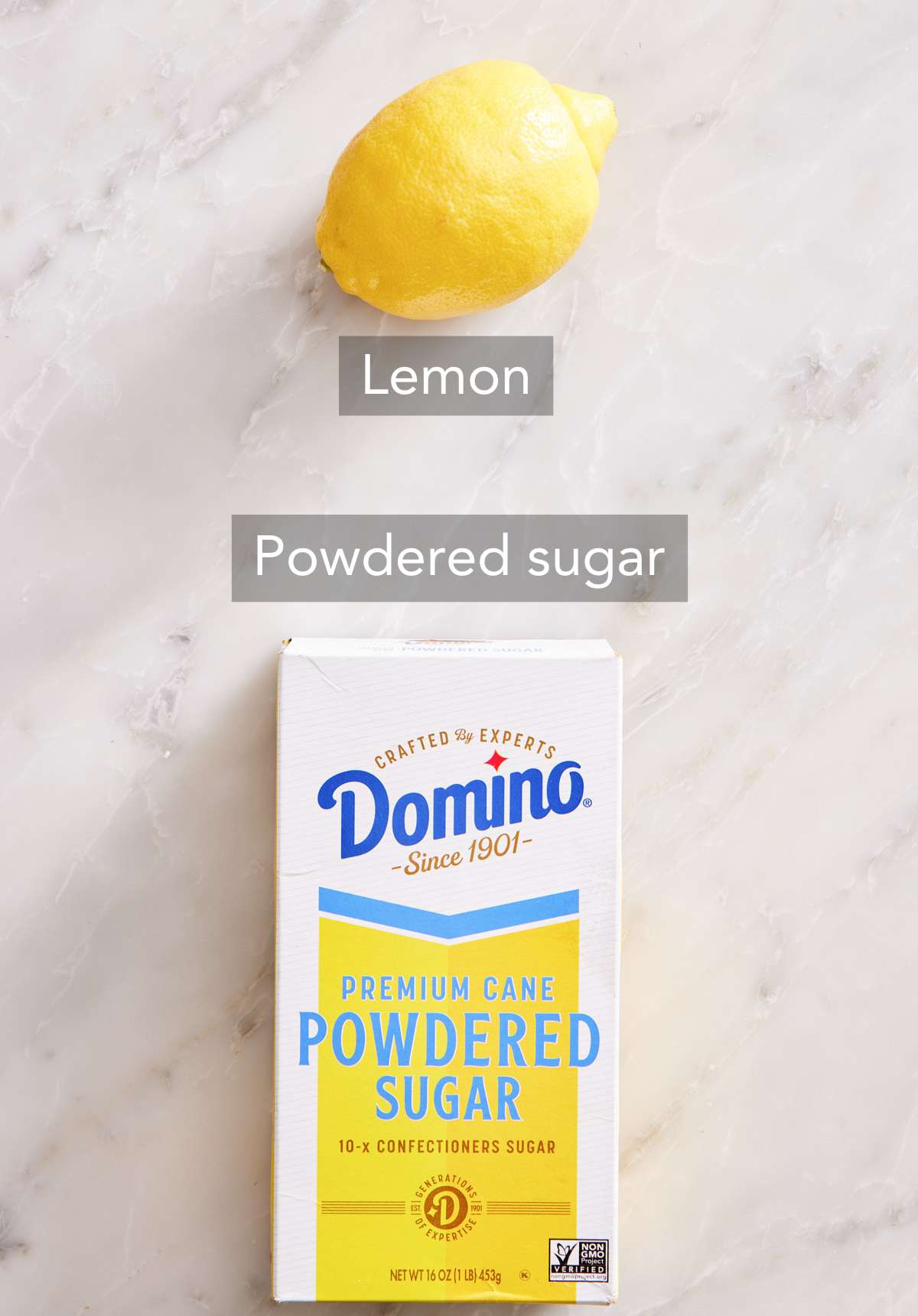
Get the full ingredient list with measurements in the lemon glaze recipe card below!
Powdered sugar — powdered sugar (also called confectioners’ sugar) sweetens the icing and gives it its smooth consistency. Granulated sugar does not work as a direct substitute in this recipe.
Lemon juice — be sure to use fresh lemon juice for the best flavor. Roll the lemon on the counter a few times, pressing it down with your palm as you roll to help loosen the juice before you squeeze it.
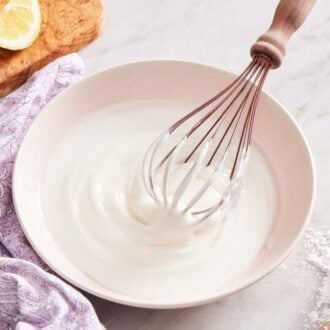
Lemon Glaze Recipe
Equipment
- Bowl
- Whisk
- Microplane or lemon zester
Ingredients
- 2 cups powdered sugar (240g)
- 3 to 4 tablespoons fresh lemon juice
Instructions
- In a medium bowl, whisk together the powdered sugar and 3 tablespoons lemon juice until smooth.
- Add the remaining lemon juice, 1 teaspoon at a time, until the icing reaches a consistency that can be drizzled over cakes, cookies, or quick breads.
Notes
- You can add up to 1 teaspoon of vanilla extract or vanilla bean paste (for pretty vanilla bean flecks!) to this recipe for added flavor. A pinch of salt can also help to balance some of the tart and sweet flavors.
- This makes enough glaze to ice a 10-inch bundt cake, two 9×5-inch loaf cakes or breads, a dozen muffins and scones, or 1-2 dozen cookies.
Nutrition
How To Make A Lemon Glaze
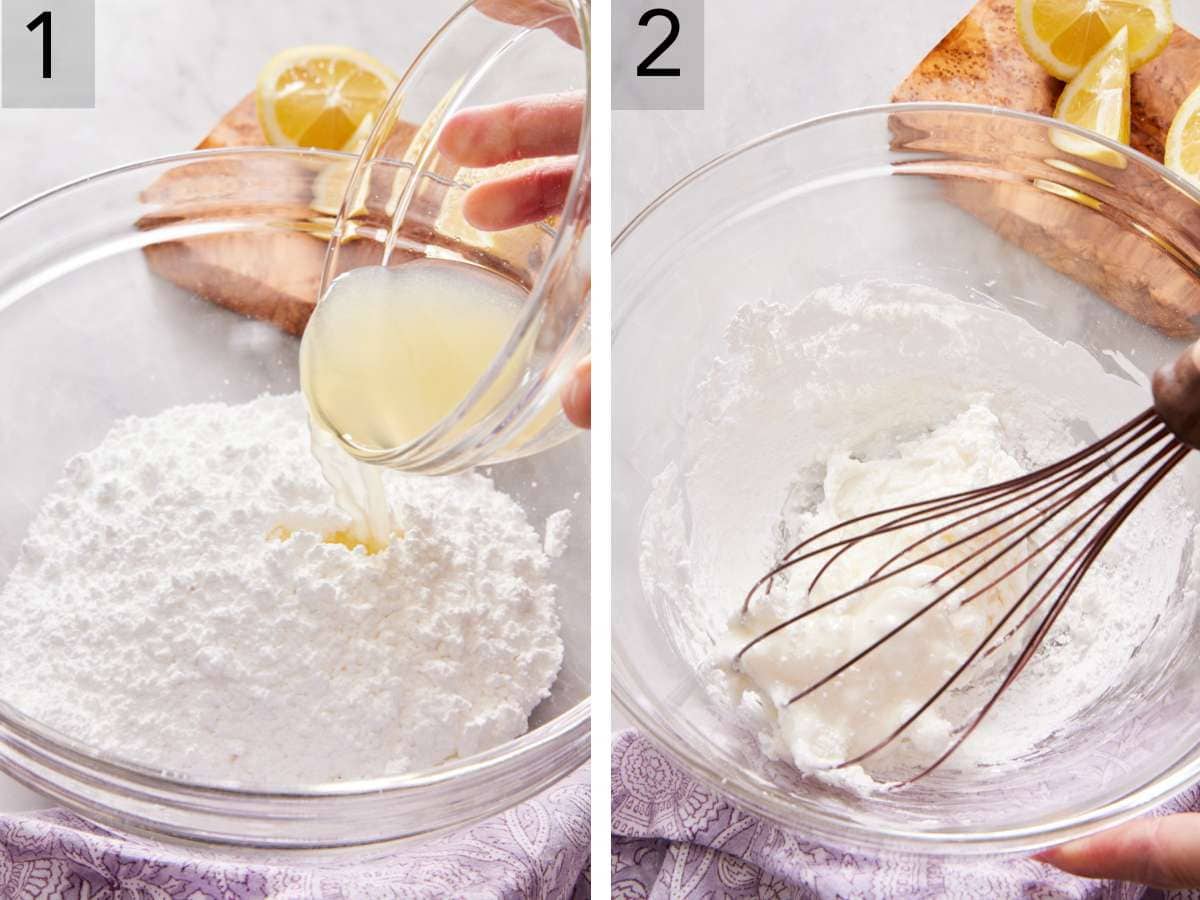
1. Add powdered sugar and 3 tablespoons of lemon juice to a medium bowl.
2. Whisk everything together until smooth.
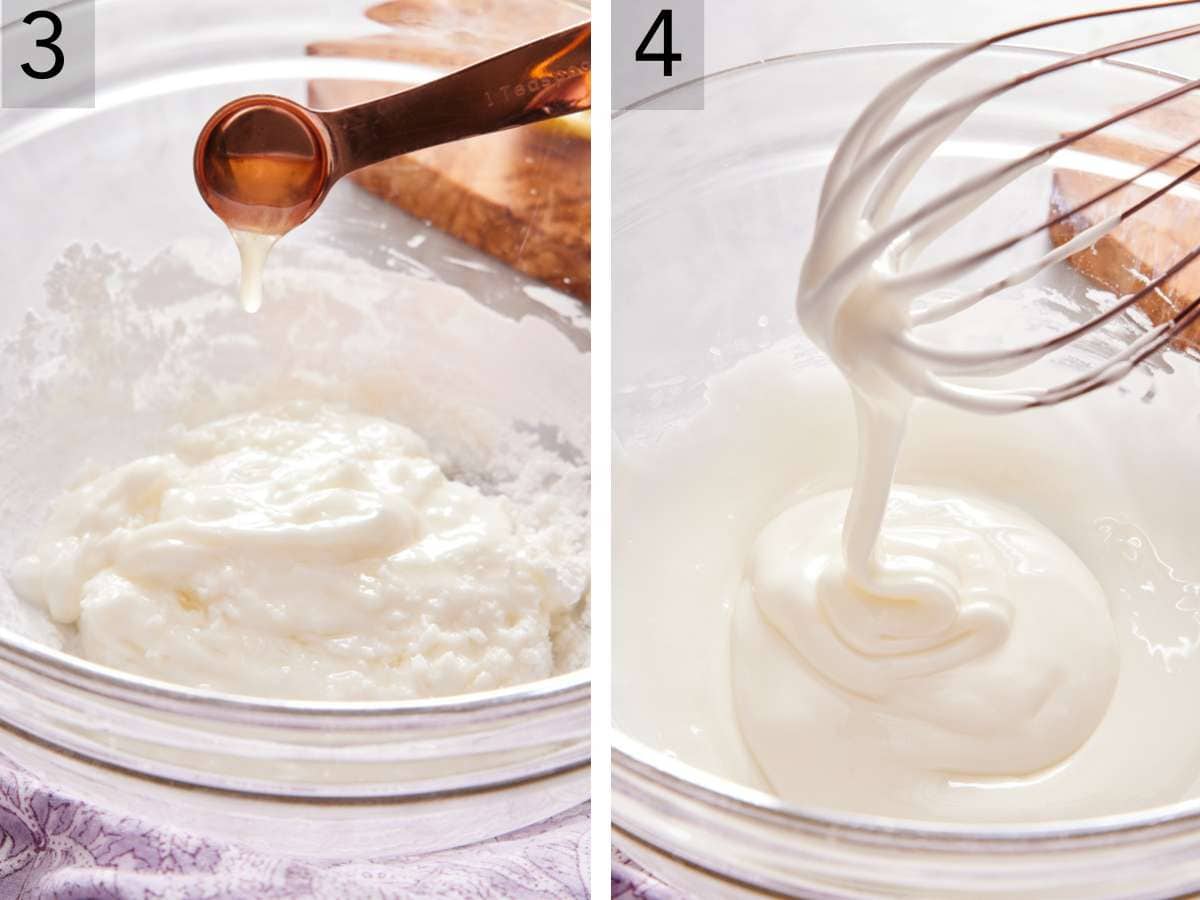
3. Add more lemon juice, a teaspoon at a time, to control the consistency.
4. Stop adding lemon juice when the icing reaches a drizzling consistency. Use immediately or cover until ready to use.
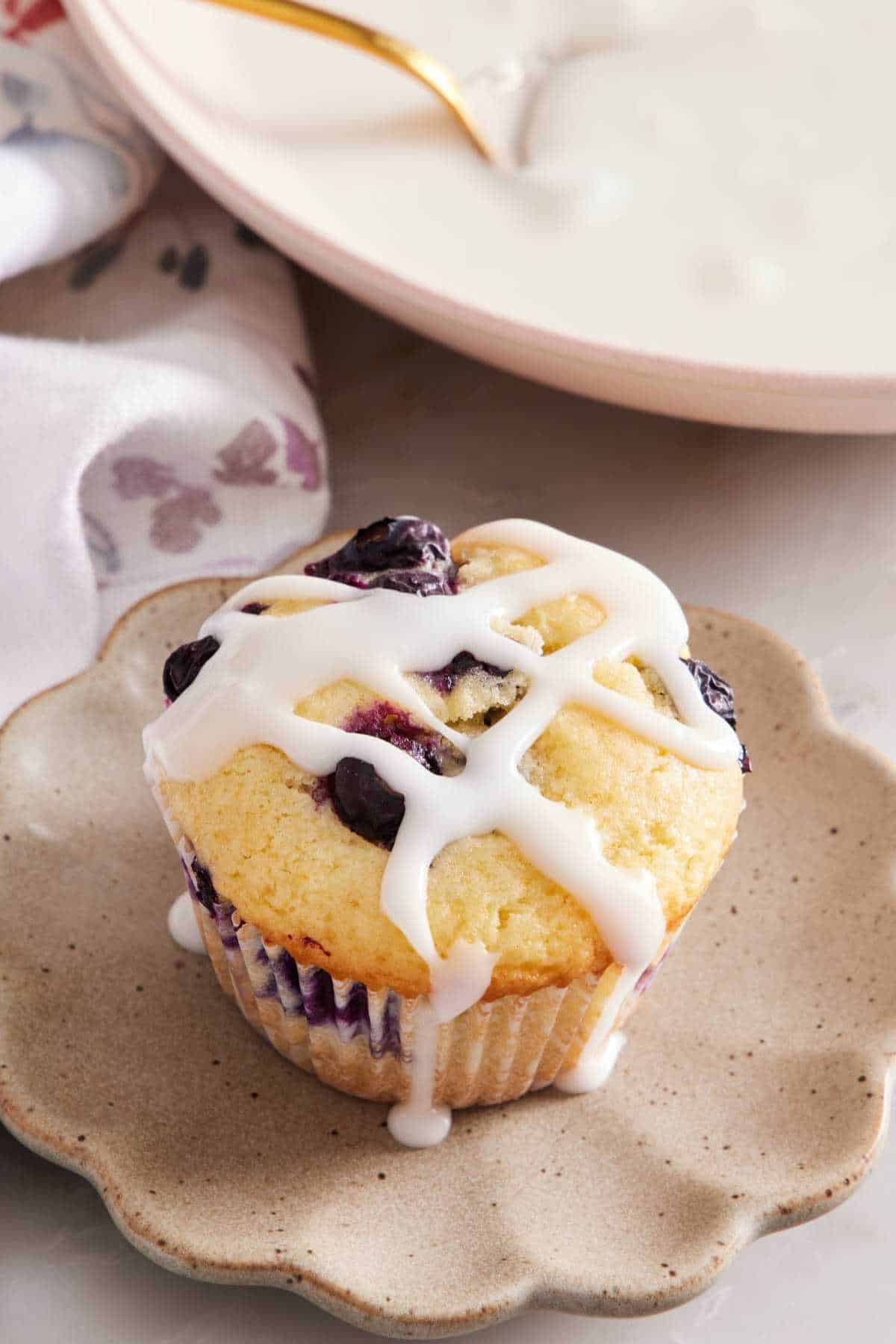
Ways To Use Lemon Glaze
Lemon icing glaze is wonderful for drizzling over cakes, muffins, pastries, and more. You can also use it to drizzle over cookies or dip cookies into it for a fuller coating. Here are some ideas for how to use it:
- Cakes: Lemon pound cake, cream cheese pound cake, poppy seed cake, lemon poppy seed pound cake, and lemon bundt cake.
- Breakfast pastries: Lemon scones, blueberry scones, or a cheese danish.
- Muffins: Lemon poppy seed muffins, lemon blueberry muffins, blueberry muffins, strawberry muffins, and raspberry muffins.
- Quick breads: Blueberry bread and strawberry bread.
- Cookies: Lemon cookies, sugar cookies, or almond cookies.
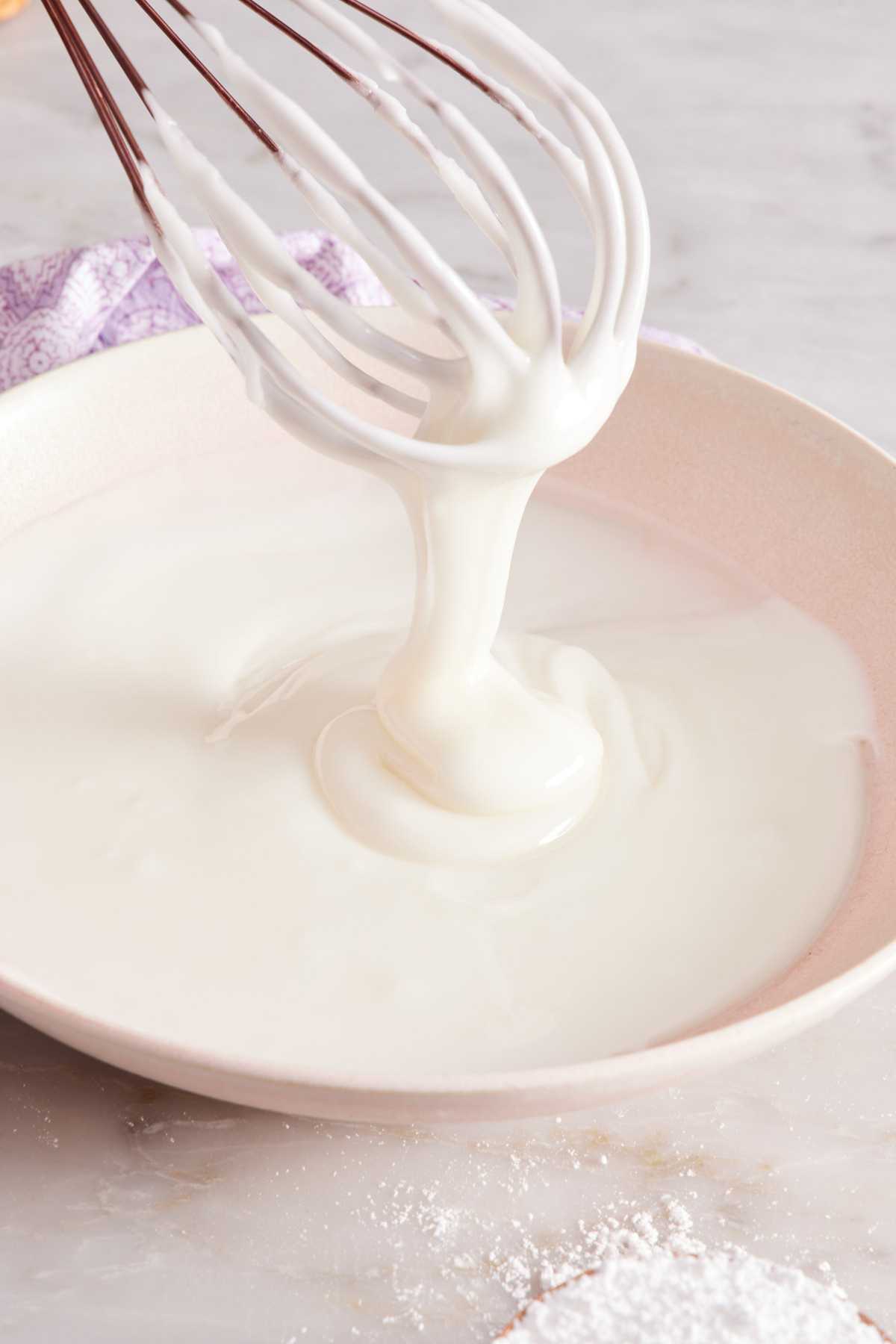
How To Adjust The Consistency Of Glaze
The thickness of the glaze will depend on how much lemon juice you add to the powdered sugar. The less lemon juice you use, the thicker the glaze will be. To make a thinner glaze, simply add more lemon juice. To test whether it’s the right consistency to use, test it on a small section of the baked good you’ll be icing and see whether it is too thick or too thin.
For a thicker icing that sets more opaquely, replace 1 tablespoon of lemon juice with 1 tablespoon of whole milk, heavy cream, or melted butter. This variation is great for using on cookies (drizzled or dipped!).
Will The Glaze Firm Up Or Does It Stay Soft?
The simple lemon glaze will harden and get a bit crackly as it dries, but how crisp it gets will depend on the type of baked good it’s used on.
For example, if you are using it over a moist baked good like pound cake or muffins, it will set but not get hard or crunchy. If the icing is used with drier baked goods like shortbread cookies, it will get more crisp.
Pro Tips For Making This Recipe
- Add fresh lemon zest. Zest the lemon before juicing it to add little flecks of yellow and a punchier lemon flavor to your glaze. Stir it in with the lemon juice.
- Try homemade powdered sugar. If you don’t have powdered sugar in your pantry, try my easy powdered sugar recipe using granulated sugar!
- Stir the glaze occasionally if you are using it slowly. The top will start to form a crust as the glaze dries. Just whisk it together to dissolve any crusty bits.
- For more precise drizzling, put the glaze in a piping bag and snip a small part of the tip off. This will create even, smooth lines of drizzle over any baked goods!
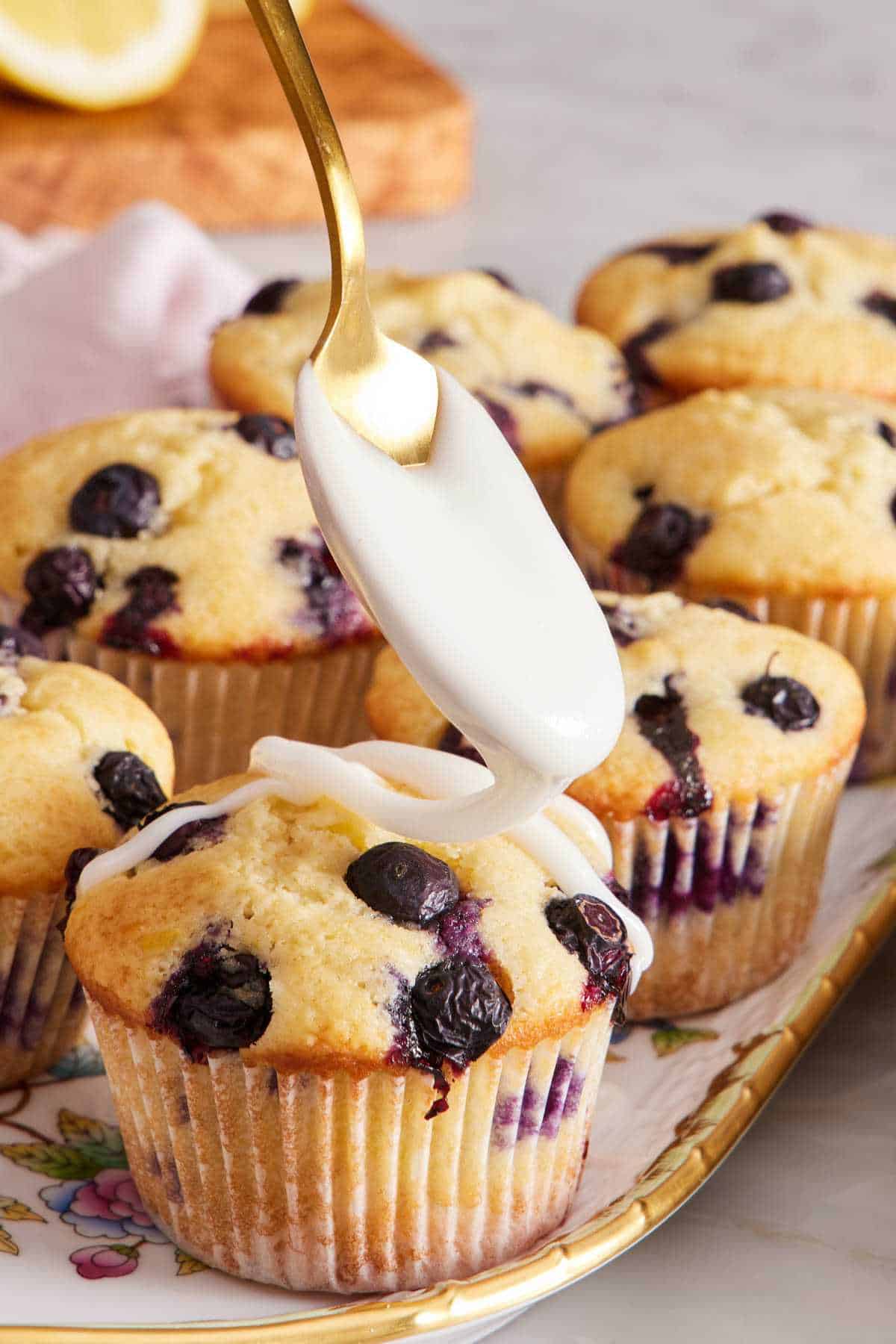
Frequently Asked Questions
Yes, you can make this lemon glaze recipe up to 24 hours in advance. Store it in an airtight container at room temperature and give it a stir before use.
Store leftover lemon icing at room temperature in an airtight container for up to 24 hours, and stir it before use. You can also refrigerate it for up to a week, but bring it back to room temperature before using it. To store it even longer, freeze lemon glaze in a freezer bag or freezer-safe container for up to 3 months. Defrost overnight in the refrigerator. You may need to add a bit more powdered sugar or lemon juice to adjust the consistency after the lemon glaze has been stored.
The cake needs to be fully cooled to room temperature before adding the glaze. A warm baked good will soak it up. Another culprit could be the consistency of the icing. If it is too thin, it will soak into the cake.
If you’ve tried this lemon glaze recipe, then don’t forget to rate it and let me know how you got on in the comments below. I love hearing from you!



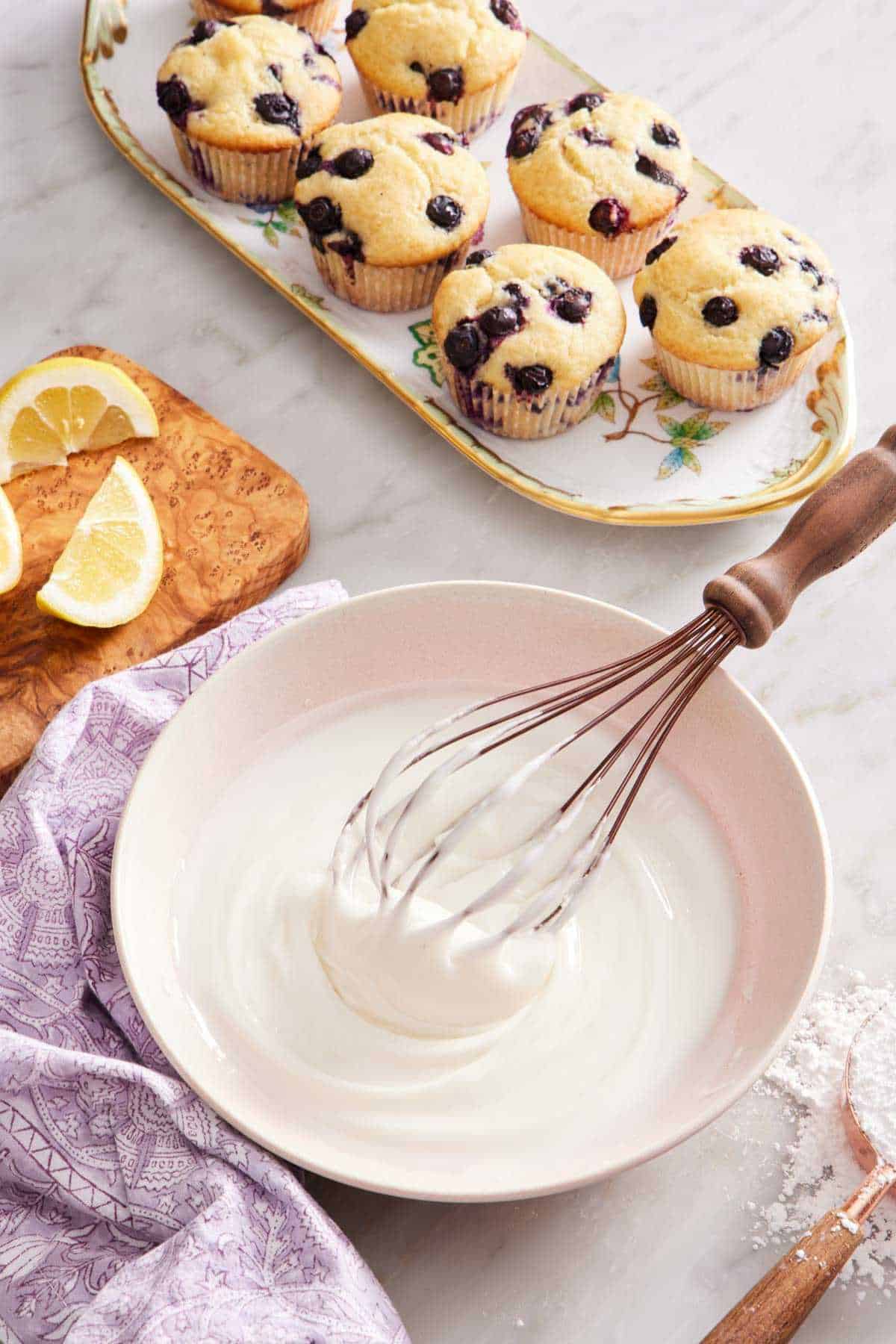


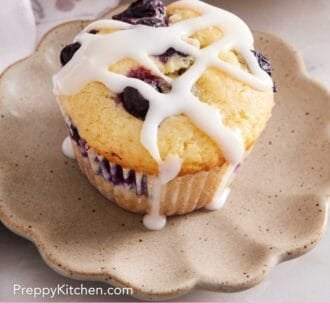

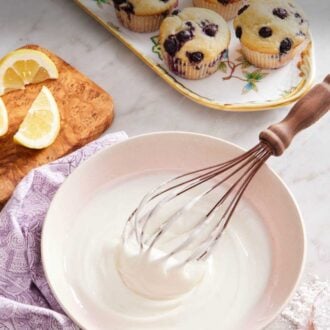
Leave a Reply